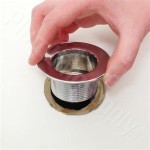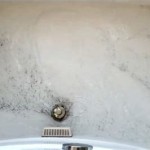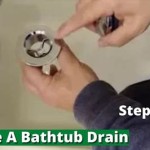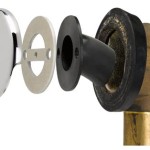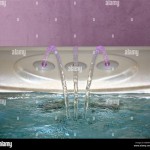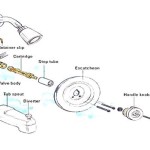Water Leaking From Underneath Bathtub: Causes, Identification, and Solutions
Discovering water leaking from underneath a bathtub can be a stressful experience for homeowners. This seemingly minor issue can quickly escalate into a significant problem, leading to structural damage, mold growth, and costly repairs if left unaddressed. A comprehensive understanding of the potential causes, proper identification methods, and available solutions is crucial for effectively managing and resolving this common household concern. This article aims to provide valuable insights into navigating the complexities of bathtub leaks, empowering property owners to make informed decisions regarding diagnosis and remediation.
Identifying the Source of the Leak
Accurately pinpointing the source of a bathtub leak is the most critical step in the repair process. Water can travel along pipes, framing, and flooring, making it appear to originate in one location when the actual problem lies elsewhere. A thorough investigation is necessary to avoid misdiagnosis and ensure that the correct repairs are implemented. Several potential sources can contribute to water leaking from underneath a bathtub, including:
Drain Issues: The drain assembly is a common culprit in bathtub leaks. Over time, the seals around the drain flange, stopper, and overflow drain can degrade, crack, or become loose. These compromised seals allow water to escape during bathing or showering. Examine the drain assembly closely for signs of wear and tear, mineral buildup, or visible gaps. A simple test involves filling the tub with a few inches of water and observing whether the water level drops over time. This can indicate a leak in the drain components.
Supply Line Leaks: The hot and cold water supply lines connected to the bathtub faucet can develop leaks due to loose connections, corroded pipes, or damaged fittings. These leaks may only occur when the faucet is in use, making them potentially more difficult to detect. Carefully inspect the supply lines and connections behind the bathtub access panel (if available) or from underneath the floor (if accessible from a basement or crawl space). Look for signs of water droplets, dampness, or mineral deposits around the fittings and pipes.
Caulking and Grout Deterioration: The sealant around the bathtub's perimeter, where it meets the wall or floor, plays a vital role in preventing water from seeping behind the tub. Caulk and grout can crack, shrink, or peel over time, creating pathways for water intrusion. Regularly inspect the caulk and grout for any signs of damage or deterioration. Pay particular attention to areas where these sealants meet the tile or tub surface. A simple visual inspection can often reveal these issues, and addressing them promptly can prevent more significant water damage.
Cracked or Damaged Tub: Though less common, the bathtub itself can develop cracks or damage that leads to leaks. These cracks may be small and difficult to spot, especially in older tubs. Inspect the tub's surface for any visible cracks, chips, or other signs of damage, paying close attention to areas where the tub is frequently subjected to stress, such as around the drain or near the edges. Hairline cracks can sometimes be challenging to detect without careful scrutiny.
Overflow Drain Problems: The overflow drain, located near the top of the bathtub, is designed to prevent water from overflowing. However, the seal around this drain can also fail, leading to leaks when the water level rises high enough during a bath. Check the overflow drain for any signs of leaks, such as water stains or dampness around the drain cover or behind the wall. Testing the overflow drain by filling the tub to the overflow level and observing for leaks can help confirm this as the source.
Assessing the Extent of the Damage
Once the source of the leak has been identified, it is crucial to assess the extent of the damage. Water leaks can cause significant damage over time, affecting not only the immediate area around the bathtub but also adjacent walls, flooring, and even the structure of the building. A thorough assessment will help determine the appropriate course of action and prevent further damage. Important steps to consider include:
Visual Inspection: Conduct a visual inspection of the surrounding areas, including walls, ceilings, and floors, for any signs of water damage, such as water stains, discoloration, or mold growth. Pay close attention to areas directly adjacent to the bathtub and any areas that may be hidden behind walls or under flooring. Consider using a flashlight to illuminate hard-to-reach areas to better detect any subtle signs of water damage.
Moisture Meter Readings: A moisture meter is a valuable tool for detecting hidden moisture behind walls, under flooring, or in other difficult-to-access areas. These devices can provide accurate readings of moisture levels, helping to identify areas that have been affected by the leak, even if there are no visible signs of damage. Take moisture meter readings in multiple locations around the bathtub and surrounding areas to get a comprehensive assessment of the extent of the water damage.
Mold Inspection: Water leaks create a favorable environment for mold growth, which can pose serious health risks. Conduct a thorough inspection for any signs of mold growth, such as musty odors, visible mold colonies, or discoloration on surfaces. Mold can grow in hidden areas, such as behind walls or under flooring, so it is essential to be thorough in the inspection process. If mold is suspected, consider consulting with a professional mold remediation specialist for proper testing and removal.
Structural Damage Assessment: Water damage can weaken the structural integrity of building materials, such as wood framing, drywall, and flooring. Examine these materials for any signs of damage, such as warping, rotting, or crumbling. If the structural damage is significant, it may be necessary to consult with a structural engineer to assess the extent of the damage and recommend appropriate repairs.
Check Adjacent Rooms: Water can travel through walls and floors, affecting rooms adjacent to the bathroom. Check these rooms for signs of water damage, such as water stains, peeling paint, or mold growth. This is especially important if the bathroom is located on an upper floor, as water can leak down to lower levels of the building.
Repairing the Leak: Solutions and Preventive Measures
Once the source of the bathtub leak has been identified and the extent of the damage has been assessed, the next step is to implement the appropriate repair solutions. The specific repair methods will depend on the nature and severity of the leak. In some cases, simple repairs may be sufficient, while in other cases, more extensive repairs may be required. Furthermore, implementing preventative measures can significantly reduce the likelihood of future leaks. Common repair solutions and preventive measures include:
Caulking and Grout Repair: If the leak is due to deteriorated caulk or grout, the first step is to remove the old sealant using a utility knife or grout removal tool. Clean the area thoroughly to remove any debris or residue. Apply a new bead of high-quality, mildew-resistant caulk along the joint between the bathtub and the wall or floor. Re-grout any damaged areas using a grout float and sponge. Allow the caulk and grout to dry completely before using the bathtub. Regularly inspect the caulk and grout and reapply as needed to prevent future leaks.
Drain Assembly Replacement: If the leak is due to a faulty drain assembly, the entire drain assembly may need to be replaced. Begin by removing the old drain flange, stopper, and overflow drain. Clean the drain opening thoroughly and apply plumber's putty to the underside of the new drain flange. Install the new drain flange, stopper, and overflow drain, ensuring that all connections are tight and properly sealed. Test the new drain assembly by filling the tub with water and checking for leaks. Periodically inspect the drain assembly for any signs of wear and tear and replace components as needed.
Supply Line Repair or Replacement: If the leak is due to a damaged or corroded supply line, the affected section of the pipe may need to be repaired or replaced. Turn off the water supply to the bathtub before beginning any repairs. If the leak is minor, it may be possible to repair it using pipe sealant or a compression fitting. However, if the pipe is severely damaged or corroded, it may be necessary to replace the entire section of pipe. Use appropriate tools and techniques when working with plumbing pipes to avoid damaging other components. Consider replacing older pipes with newer, more durable materials, such as PEX or copper, to prevent future leaks.
Tub Repair or Replacement: If the leak is due to a cracked or damaged bathtub, the tub may need to be repaired or replaced. Minor cracks or chips can sometimes be repaired using a bathtub repair kit. However, if the damage is extensive, it may be necessary to replace the entire bathtub. Replacing a bathtub is a complex task that may require the assistance of a professional plumber. When replacing a bathtub, choose a high-quality tub that is durable and resistant to cracking or damage. Ensure that the new tub is properly installed and sealed to prevent leaks.
Regular Inspections: Conduct regular inspections of the bathtub and surrounding areas to identify potential problems early on. Check for signs of water damage, such as water stains, mold growth, or peeling paint. Inspect the caulk and grout for cracks or deterioration. Inspect the drain assembly and supply lines for leaks. Addressing minor issues promptly can prevent them from escalating into more significant problems.
Proper Ventilation: Ensure that the bathroom is properly ventilated to prevent moisture buildup. Install an exhaust fan and use it during and after showers or baths. Proper ventilation can help to reduce the risk of mold growth and water damage.
Professional Plumbing Services: For complex or difficult-to-diagnose leaks, it is best to consult with a professional plumber. A plumber has the expertise and tools necessary to accurately identify the source of the leak and implement the appropriate repair solutions. Professional plumbing services can also help to prevent further damage and ensure that the repairs are done correctly.

Why Does Your Bathtub Leak Through The Floor Advantaclean

How To Diagnose A Bathtub Leak Diy

Water Leaking From Under The Bathtub Possible Causes And Solutions

Help A Diy Fix This Leak Damp In Bathroom Page 1 Homes Gardens And Pistonheads

Why Is There Water Leaking From Underneath My Bath Gas Tech Heating

5 Reasons Your Bathtub Is Leaking And How To Fix It Fast

Leaking Tubs And Showers Why Pristine Tile Carpet Cleaning

5 Common Reasons Why Your Bathtub Is Leaking Water Dry Force

How To Diagnose A Bathtub Leak Diy

Water Leaking Off Side Of Tub Diy Fix
Related Posts

